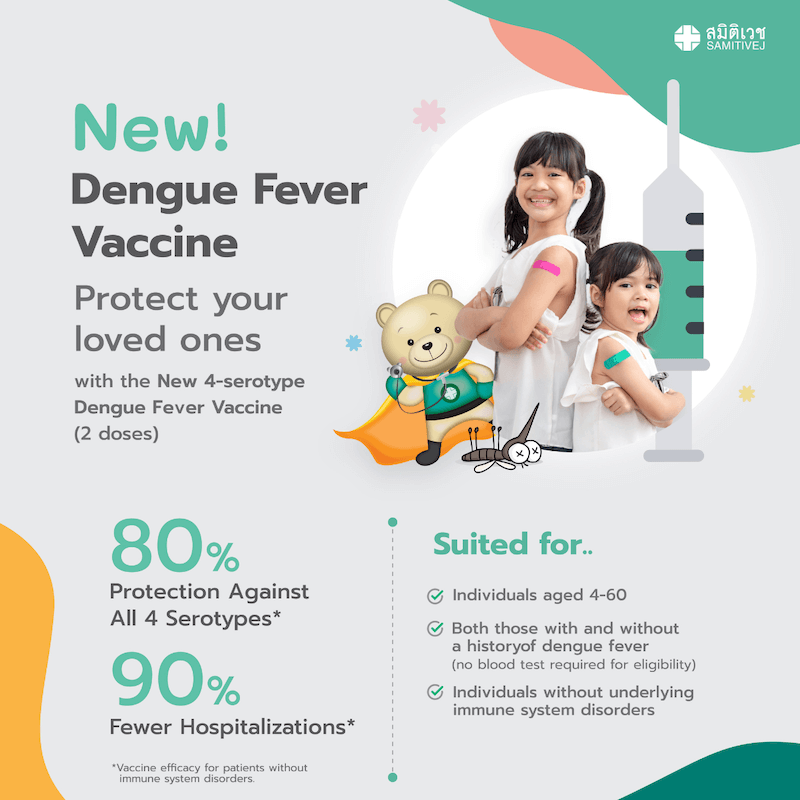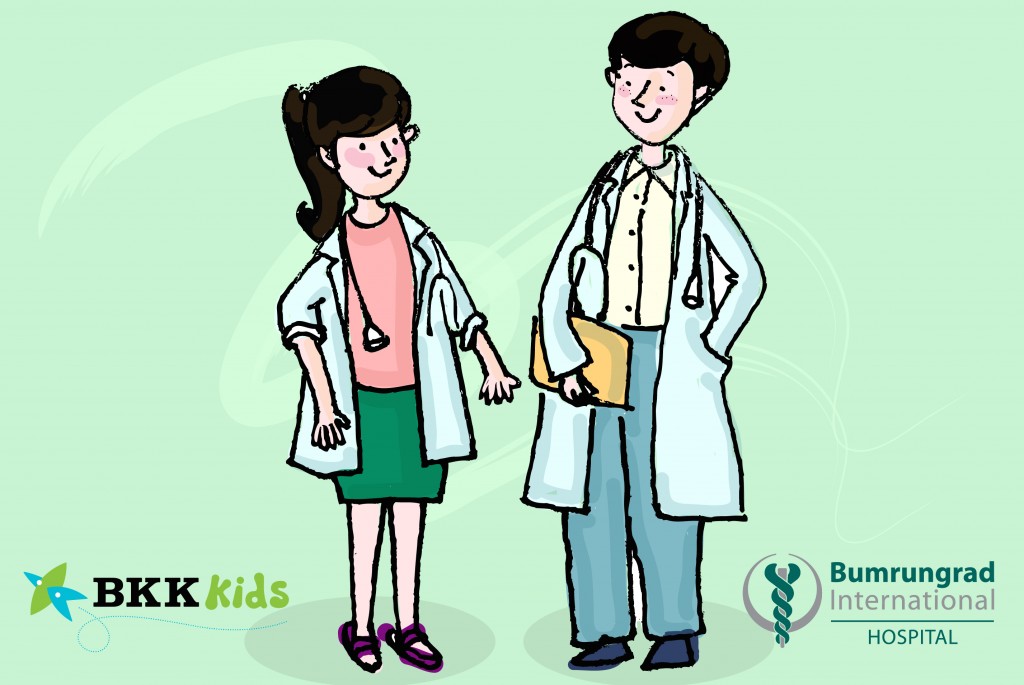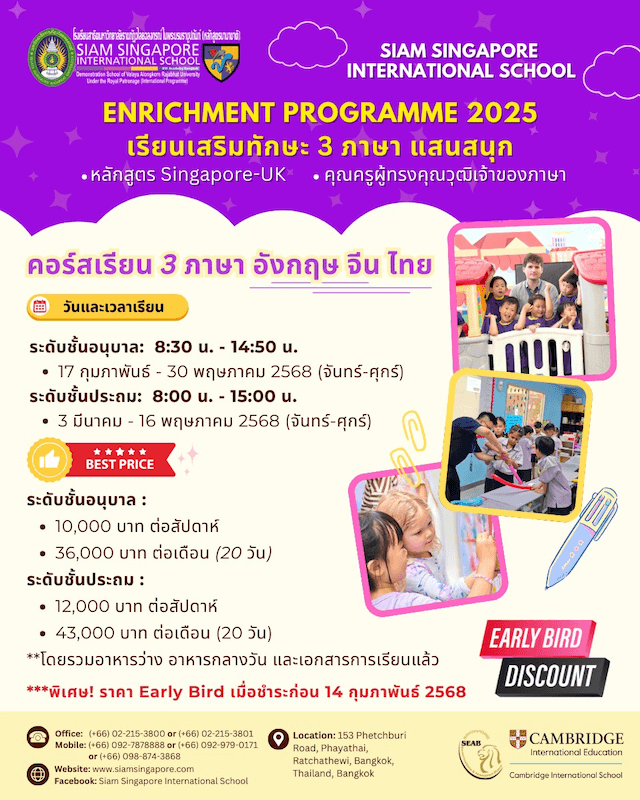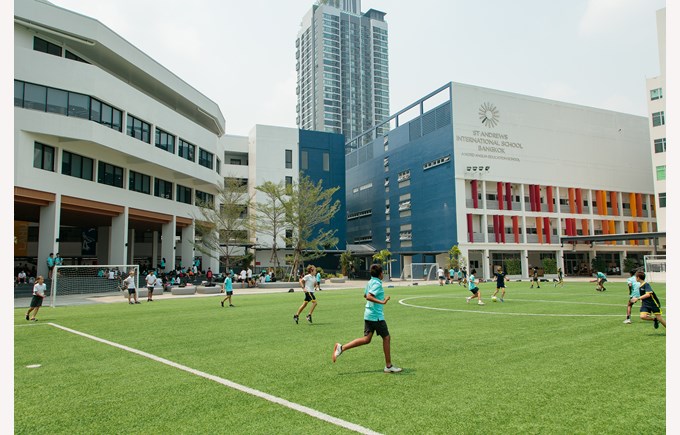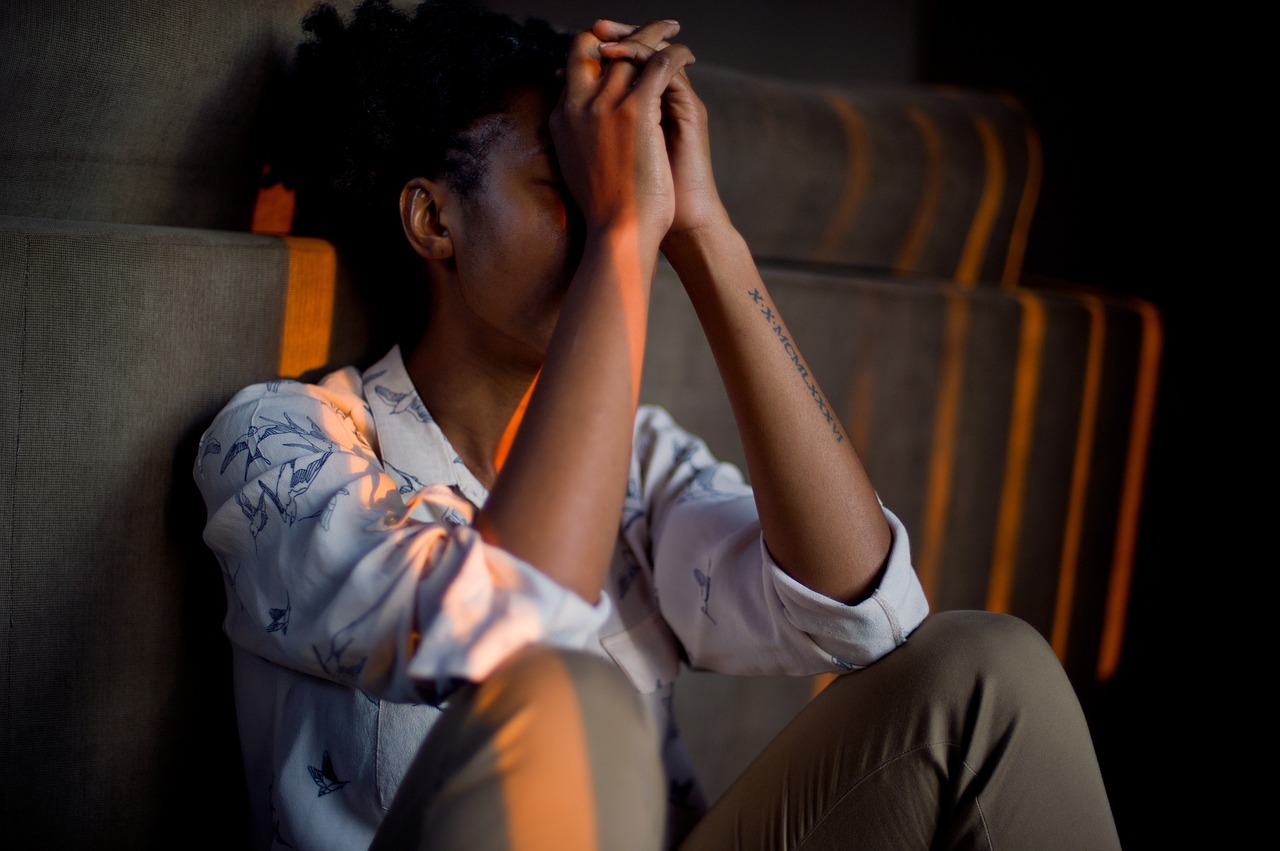As part of an ongoing series of articles with Bumrungrad International Hospital, we asked parents to submit family health related questions to us, to be addressed by the hospital’s Medical Coordination Office. Below is Part 2 of this series (the first set of FAQs were published in March 2017).
1. What would be the treatment for flat heads in kids? My 6 years old son has a flat head — you’d never know by looking at him from the front but from the side, it’s very noticeable. Should we consult with a neuro? He seems fine now, but we are concerned about any effects that could be problematic later in life.
This condition is associated with either Plagiocephaly or Brachycephaly which are types of asymmetry in the shape of a baby’s skull. Since your son is already 6 years old, there shouldn’t be any neurological problems associated with his head shape. Head shape deformities do not have any lasting harmful effects on neurological development, but the misshapen head could cause future cosmetic concerns with appearance, as well as issues with fitting eyeglasses and sunglasses, as well as helmets and other head wear. Additionally, it could be associated with dental problems down the line.
In general, there are many cases that can lead to a child developing a flat head, including:
- Some medical conditions like: Congenital Muscular Torticollis
- Baby tending to look in one direction over extended periods of time.
- Premature birth.
- Twins or triplet cases can be more likely to develop this condition.
Treatment is usually focused on babies up to 6 months old and would depend on the cause. Better treatment outcome depends on how early treatment is started. The first step will be treating the cause, if known, but usually the best course of treatment will be physiotherapy and trying to change the position of the baby while lying down.
If these methods don’t work and the baby is 6 months or older, a doctor may recommend wearing a special helmet 23 hours a day to help correct the shape. The helmet fits snugly on the round parts of the baby’s head but is looser on the flat parts. This gives the flat parts more room to expand as the baby’s head grows. The duration of treatment depends on the severity of the condition, as well as the age of the baby. Most of the time, the helmet treatment is carried out for a period of 4 to 5 months.
2. My daughter has had a sty for several weeks. What should I look out for and how should I treat it at home?
A sty is an acute infection of an oil gland of the eyelid that presents as an abrupt onset of a red tender bump on the eyelid. It can be associated with inflammation of the eyelids because abnormal oily secretions block lid glands that may become secondarily infected.
Immediately contact an eye doctor if your child has any of the following problems:
- The eye is swollen shut.
- Redness appears around the entire eye.
- There is any change or disturbance in one’s vision.
- Swelling lasts for more than three weeks.
- The sty come back or bleed.
- Eyelashes fall out.
- The sty is on the bottom eyelid, near the nose.
- The white part of the eye becomes red.
- Pus or thick discharge continues to drain from the eye.
- Fever higher than 38 C.
- Excessive persistent tearing.
- Persistent redness of the surface of the eye.
- Significant pain.
- The sty recurs, especially if the sty does so in the same location as a previous sty.
- Swelling of the lymph nodes in the neck or in front of the ear on the side of the sty.
- Double vision.
Most sties go away on their own without the need for medical treatment in five to seven days. Here are some home treatment options:
- Apply a warm compress 4-6 times a day for 15 minutes at a time, keeping eyes closed. This will help with drainage.
- Gently scrub the eyelid with tap water or with a mild, nonirritating shampoo such as baby shampoo, keeping eyes closed. This can also help with keeping the area clean as well as drainage.
- Avoid squeezing or puncturing the sty, as this can lead to a more serious infection.
- Discontinue wearing contact lenses during this time as this can lead to an infection.
- Practice good hygiene such as regular hand washing in order to prevent the sty from coming back.
- Upon waking up, apply a warm washcloth to the eyelids for 1-2 minutes. This may help to liquefy the contents of the oil glands of the eyelid and thereby preventing a blockage and a recurrence of sties.
3. Can verrucas be removed in hospital? If not, how can I prevent them from spreading as my son’s verrucas have got considerably worse since arriving in Bangkok?
Verrucas are also known as “Plantar Warts” which are caused by HPV (Human Papilloma Virus) infection. The virus enters the body through small cuts, breaks or other weak spots on the bottom of your feet.
Most verrucas are harmless and disappear without treatment but in some cases it may take a year or two for them to completely disappear. Over-the-counter medication may be necessary if the condition is painful or spreading, but repeated treatments may be required in order to keep the infection from returning in the future.
Here are the treatment options available through your doctor:
- Peeling medicine (salicylic acid) works by removing layers of the wart bit by bit. It also stimulates the immune system, which helps to fight the disease.
- Freezing medicine (cryotherapy) involves applying liquid nitrogen to the lesion, resulting in blister formation around the affected area. The dead tissue will be sloughed off within a week or so, and the immune system will also be stimulated to fight off the virus. Repeated treatment may be necessary.
If above treatments don’t work, your doctor may consider additional acid treatments, immune therapy, surgical removal, or laser treatment. A vaccination against HPV may also be necessary to ward off future infections.
To avoid the spread or worsening of the condition:
- Avoid direct contact with your own warts and wash the hands carefully after touching a wart.
- Cover verruca with a waterproof plaster or a special verruca sock for swimming or PE lessons at school
- Avoid walking barefoot around swimming pools and locker rooms
- Don’t pick at or scratch warts
- Don’t use the same emery board, pumice stone or nail clipper on the warts as healthy skin and nails
4. My 1-year old suffers from ongoing bouts of constipation. What more can we do other than keeping him hydrated and feeding him fruit and fibre?
As children phase out of baby food, they may have some problems with constipation because they’re used to more fluid content in their foods. Here are some simple ways you can help your baby overcome this dietary change:
- Give your child 2-3 additional glasses of water. Hydration helps to soften stools.
- Add more fiber to your child’s meals. Fruits and vegetables are a great way to add more natural fiber and sugar to your child’s diet.
- Exercise is also important, so encourage your child to move more and be active. This helps to encourage the passage of food through the intestines and move the bowels.
- If your child is still constipated after making these changes, consult with your child’s doctor.
Go to the ER immediately if your child exhibits any of the following symptoms:
- A stomach pain that last longer than an hour
- Rectal pain lasting longer than an hour, and continued straining while using the bathroom
- Vomiting and stomach swelling
- If your child doesn’t seem like himself or looks very sick
- If you feel like something else is wrong and feel the problem is urgent.
5. I have just had a C-section with my first child. How soon after a Cesarean can I start to exercise (mostly running) again?
You may want to wait until your six-week postpartum checkup to see how you’re doing first and then gradually resume exercising as soon as you get the go-ahead from your doctor or midwife, and as long as you feel up to it. However, keep the following points in mind:
- Start with short intervals of exercise until you gradually become stronger. The effects of pregnancy hormones can affect your joints for up to six months after birth, so don’t do any high-impact activities right away.
- Be patient and do not expect to get back to your original fitness levels. Listen to your body carefully and be mindful of the surgery wound when moving.
6. What is the current thinking regarding melatonin or other natural/herbal sleep remedies for small children? My 3.5-year-old is a terror when tired and often wired at bedtime. I can’t figure out how to get him to sleep more!
Melatonin is a hormone supplement, most commonly used in adults for primary treatment of casual insomnia and jet lag correction. Melatonin does not appear to improve “sleep efficiency,” which is measured by the percentage of time that a person actually spends sleeping during the time set aside for sleeping. Although some people may say that melatonin helps them to sleep better, science does not support this claim. Additionally, whatever help Melatonin is likely to provide is seen in older adults, not in children.
For these reasons, it is best to avoid giving melatonin or other herbal sleep remedies to your child. There is no scientific proof that these supplements work in small children, and the best thing you can do for your child is to help him develop healthy sleep habits the natural way. Start with the following simple steps to encourage healthier sleep behavior:
- Reduce the use of all stimulants such as TV, computers, games, or anything else that may excite your child at least two hours before bed.
- Encourage healthy “winding down” activities with your child such as reading quietly together, or you reading to him to help him relax.
- Make adjustments to your child’s diet – if he’s eating too many foods high in sugar or caffeine, cut them out of his diet and replace with healthier alternatives.
- If you find that these approaches do not work, speak to your pediatrician about a safe sedative prescription such as Triclofos or Pedicoloryl.
7. Kids and caffeine – how much is safe? My 5 year old loves Thai iced tea which I recently heard has loads of caffeine… she’s not a hyper child, drinks it around once a week, and the drink seems to have no behavior altering effects on her.
A glass of Thai iced tea can contain up to 60 mg of caffeine depending on how it has been prepared. Some guidelines state that the maximum recommended intake of caffeine for children aged 4 – 6 years old is 45 mg a day which is the equivalent of a 12-ounce Diet Coke.
Caffeine is absorbed in the body tissues and increases heart rate, blood pressure, body temperature and affects attention and sleep patterns. A child’s central nervous system is more sensitive to caffeine’s effects compared to adults and can cause hyperactivity, nervousness, anxiety, stomach problems and sleep pattern disturbances. If there are undiagnosed heart problems, irregular or abnormal heartbeats can be worsened.
Children do not need caffeine in their diet and although it may not cause any problems at best but at worse, as children are growing it can interfere with their developmental processes.
8. When does a baby’s rash warrant a doctor’s visit? What symptoms would be cause for alarm? And often, we are prescribed a steroid cream to treat rashes — while they clear rashes up fast, are there more natural treatment alternatives?
Rashes in children can be caused by a variety of reasons, including infection, irritants, bug bites, heat, allergies, or bleeding. The one that requires immediate attention from a pediatrician would be the petechiae or purpura. These are caused by ruptured blood vessels under the skin and may indicate a more serious illness.
- Petechiae has the appearance of fine-tipped red flat dots that do not blanch when you press on them.
- Purpura is similar but larger and can appear purplish or bluish in colour.
Another indication to bring the child in is when the rash is accompanied by other alarming symptoms, such as the child looks very ill, has prolonged high fever, and is unable to eat and play as normal. The character of rashes and when the rash occurs usually indicate the nature of the rashes. Most rashes are self-limited such as rashes like milia, seborrheic dermatitis, infantile acne, or rashes from viral illnesses like roseola and molluscum contagiosum. These do not require any medication and the rash will eventually go away according to its natural course. However, to be sure, a visit to your pediatrician to clarify the nature of the rash is advised so appropriate care can be given.
Topical steroid is not always indicated for rashes in children. Most self-limiting rashes are recommended to be left alone to be exposed to air whenever possible, use soap and water sparingly, and encourage your child not to scratch the rash.
While the rash heals, here are some ways you can keep your child comfortable at home
- Apply oatmeal or oatmeal based bath products
- Apply calamine lotion to calm itching
- Light, air-penetrable clothing is best, especially in hot climates
- Prevent the area from getting too dry by using moisturizer or urea cream
Editor’s Note: This article is sponsored content from Bumrungrad International Hospital. It is intended as general information that may be useful for parents. It is not to be used as a substitute for professional medical advice, diagnosis, or treatment. Always seek the advice of your physician with any questions about a medical condition.
To submit a question to the next set of FAQs in this series, please fill out this online form.



